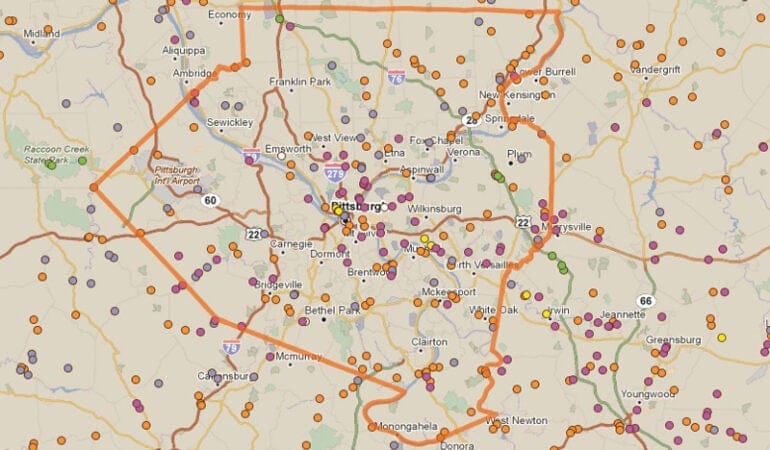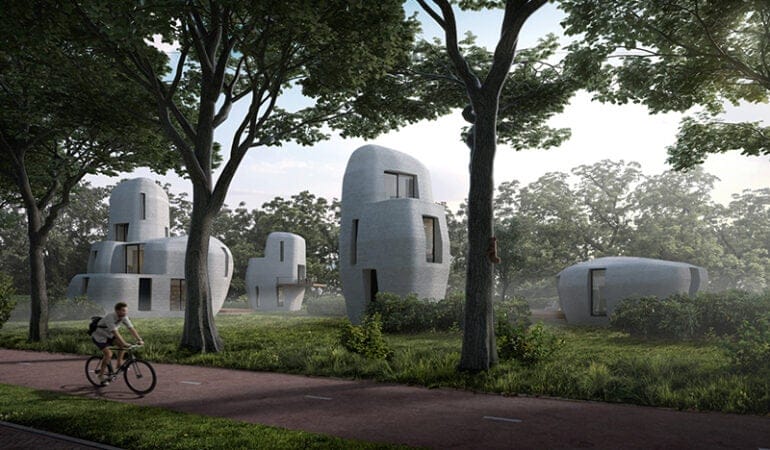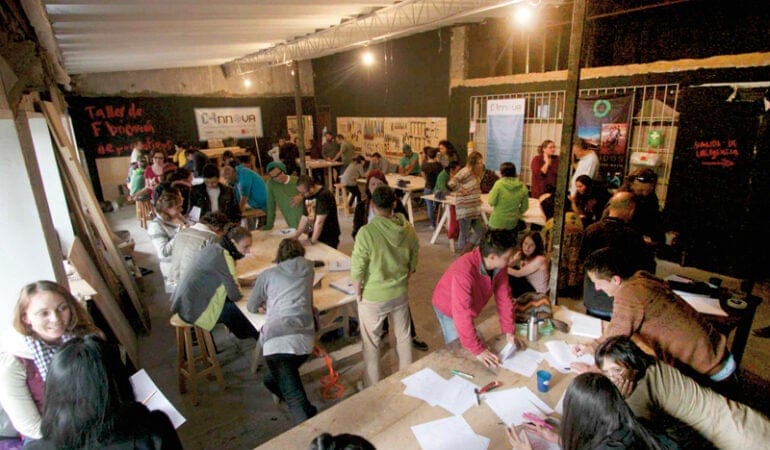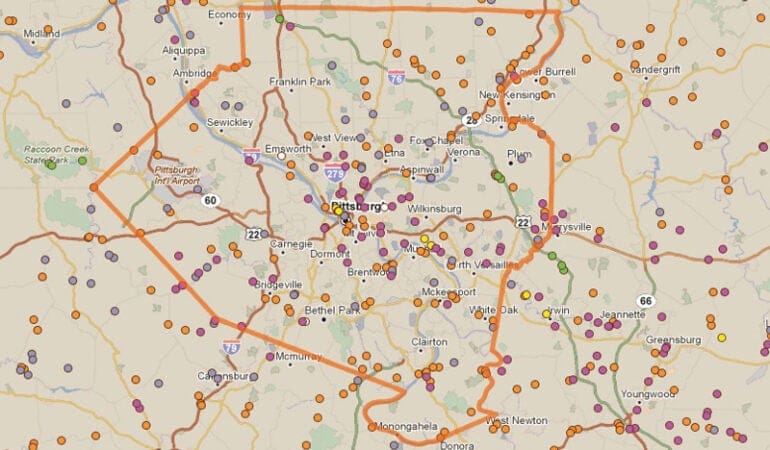Este julio, en Santa Marta, la ciudad sobre la costa caribeña de Colombia, los ciudadanos, grupos comunitarios, funcionarios públicos y una variedad extraordinaria de especialistas tomarán las herramientas y trabajarán juntos durante dos semanas para solucionar desafíos de diseño tecnológico que resultan importantes para los residentes de las comunidades costeras. En el proceso, machacarán los asuntos ecológicos, sociales y políticos de los habitantes pobres de la región, en particular aquellos que viven en asentamientos informales nuevos.
La Cumbre de Diseño para el Desarrollo Internacional (IDDS) de Colombia: 2018, Nuevos Territorios Costeros, cuenta con unos 60 participantes, la mayoría de los cuales son latinoamericanos, y reunirá a expertos con maestrías, pescadores, arquitectos, expertos en robótica, antropólogos, economistas, artistas, biólogos, químicos y distintos ingenieros. La gran mayoría de los participantes son mujeres.
Los temas principales por tratar son saneamiento, vivienda, acceso al agua y seguridad alimentaria. Los participantes considerarán estas necesidades dentro del contexto de la planificación territorial. El Programa de Naciones Unidas para los Asentamientos Humanos (ONU-Habitat) considera la planificación urbana y territorial como un proceso de toma de decisiones que apunta a objetivos económicos, sociales, culturales y medioambientales mediante políticas de suelo. La planificación es una forma de remodelar las ciudades y regiones para acelerar el crecimiento local y regional “mientras se atienden las necesidades de los grupos más vulnerables, marginados o desatendidos”.
La lógica detrás del evento de diseño es reunir distintos actores en un entorno propicio para innovar en distintos planos. Con el tiempo, la instrucción y el apoyo suficientes, los participantes pueden colaborar para crear herramientas y métodos adecuados para las necesidades locales, y progresar en el debate de problemas complejos y sistémicos. Uno de los principios fundamentales del proceso de diseño es esperar resultados negativos y aprender de ellos.
El evento del IDDS se basa en el proceso de diseño tecnológico, y refleja sus orígenes en un proyecto lanzado en el Instituto de Tecnología de Massachussets (MIT), en 2002. El anfitrión del evento es el Centro de Innovación de Tecnologías Apropiadas y Educación (C-Innova), con base en Bogotá, Colombia, fundado en 2015. C-Innova es un descendiente del D-Lab, de MIT, un centro de diseño y educación tecnológica y programa internacional para el desarrollo de comunidades con actividades en América Latina, el Caribe, África y Asia.
La estrategia antipobreza del D-Lab pretende lograr que la vida de los pobres sea menos precaria. Los prepara para construir asentamientos duraderos y crear oportunidades económicas mediante el desarrollo de tecnologías y productos que puedan encontrar mercados dispuestos dentro de la comunidad, y tal vez fuera de ella. El D-Lab ha crecido e incluyó un plan de estudios interdisciplinario con énfasis en el trabajo de campo, la investigación aplicada a la tecnología y la construcción de la comunidad, así como métodos de desarrollo ascendente enfocados en la capacidad creativa local y la sustentabilidad.
Amy Smith, directora fundadora del D-Lab, es profesora sénior de ingeniería mecánica en MIT. Fue voluntaria del Cuerpo de Paz en Botsuana, y en 2004 recibió una “beca al genio” de la Fundación McArthur. Sus primeros trabajos colaborativos de diseño, que realizó con estudiantes interesados en abordar los efectos de la pobreza en todo el mundo, incluyen métodos para fabricar carbón poco contaminante con deshechos agrícolas, filtros de agua de bajo costo y fácil mantenimiento, y kits de prueba de bacterias.
El laboratorio trabaja con una extensa lista de socios internacionales y encabeza la Red de Innovación para el Desarrollo Internacional (IDIN), un conjunto de universidades, instituciones y centros de innovación, como C-Innova. La IDIN fue fundada para apoyar las Cumbres de Diseño para el Desarrollo Internacional, cofundadas por Smith en 2007.
Algunas de las innovaciones creadas con la influencia del D-Lab son un sistema de filtración de agua multietapa para tratar agua mineral contaminada en Valle del Cauca, en la montañosa Región del Pacífico de Colombia, y un método de compost que crea tierra fértil para usar en producción alimentaria a baja escala en La Calera, a las afueras de Bogotá.
“Somos un poco distintos en el nivel en que involucramos a los grupos comunitarios (los usuarios finales) en el proceso de diseño, el proceso de resolución de problemas”, explicó Smith. “Muchas iniciativas consultan a los usuarios, pero no los involucran del todo para crear las soluciones, identificar los desafíos de la implementación y realizar mejoras”.
IDDS Construyendo Paz, presentada por la Universidad Nacional de Colombia en enero de 2018, reunió a participantes en charlas sobre repoblación posconflicto, que incluyeron a miembros de las Fuerzas Armadas Revolucionarias de Colombia (FARC). En la cumbre nació un sistema de recolección y purificación de agua de lluvia, además del diálogo constructivo. “Todo lo que contribuya a que las comunidades resuelvan un problema —como el de contar con agua potable a muy bajo costo— también es una contribución a la paz, en la medida en que nos beneficiará a todos”, afirmó Efrén Morales, exrebelde, al servicio de noticias de la Universidad Nacional de Colombia.
Bogotá
C-Innova trabaja desde un taller de vecindario reconvertido, a escasos metros de la Universidad Nacional de Colombia, en Bogotá. Allí, los estudiantes orientados al diseño y otros miembros de la comunidad pueden desarrollar sus habilidades con herramientas, experimentar y fabricar aparatos prácticos y de bajo costo con materiales de uso cotidiano. Para los estudiantes, significa tener acceso inmediato a mentores, equipo y materiales en un entorno menos burocrático que el de la universidad. Para la comunidad local, en todo el país y la región, es parte de un movimiento más grande que utiliza principios de diseño y enfoques de colaboración para combatir la pobreza y democratizar el acceso a la tecnología.
El centro surgió de un proyecto patrocinado por la Agencia de los Estados Unidos para el Desarrollo Internacional (USAID) con el objeto de establecer una red mundial de centros tecnológicos comunitarios, según afirma Pedro Reynolds-Cuéllar, cofundador. La idea era reunir expertos y profesionales regionales e internacionales, residentes y organizaciones locales, y emprendedores de la zona para abordar las necesidades de la comunidad mediante actividades orientadas al diseño que fomenten las empresas sustentables a nivel local y regional. El centro está basado en una plantilla del D-Lab para los centros de innovación comunitaria: un lugar de trabajo y de reunión equipado con herramientas, sesiones de capacitación y una tienda que venda las tecnologías.
C-Innova organizó una cumbre para eliminar los residuos en Cali, en la que trabajó con recolectores de basura locales para desarrollar un método de reciclaje de filamento plástico que se pueda usar como resina para impresoras 3D, crear un nuevo mercado para este material y dar a luz a lo que hoy es una empresa con 50 empleados que recicla desechos de construcción y los convierte en cemento. Además, trabajó con la población desplazada en la periferia del sudeste de Bogotá y ayudó a madres solteras en emprendimientos para confeccionar decoraciones de fiesta con plástico reciclado, y diseñar y construir elementos prácticos para el hogar, como cunas y linternas.
Ecosistemas de innovación
“Lo que es importante para nuestro trabajo es esta idea de crear ecosistemas locales de innovación, ya sean urbanos o rurales, que consisten en una red de miembros de la comunidad y espacio físico”, dijo Smith.
Después de casi dos décadas de promover respuestas a la pobreza basadas en el diseño, el D-Lab empezó a hacer un inventario de los tipos de condiciones que alientan a la innovación. En esta etapa de la investigación, en la cual se formulan hipótesis, el D-Lab está repasando 300 innovaciones locales, desde peladores de maní y pequeñas turbinas submarinas hasta filtros de agua y servilletas sanitarias, mediante entrevistas y confección de casos de estudio en África, el sudeste asiático y América Latina.
En el primero de una serie de ensayos, Elizabeth Hoffecker, investigadora científica del D-Lab, describe a los ecosistemas de innovación como “comunidades de ciertos lugares con actores que interactúan y se involucran en producir innovación y apoyar procesos de innovación, junto con la infraestructura y el entorno propicio, que les permiten crear, adoptar y difundir soluciones a desafíos locales”.
El laboratorio pretende identificar los límites y otras características de los ecosistemas de innovación, formas de medir y respaldar la capacidad de innovación de una comunidad, y la importancia de la innovación local en el contexto de los Objetivos de Desarrollo Sostenible de la ONU e iniciativas similares.
El D-Lab clasifica las innovaciones locales según el tipo: las que ahorran tiempo o trabajo, como lavadoras impulsadas a pedal y trilladoras de arroz a energía eólica, que aumentan los ingresos y liberan tiempo para otros usos productivos; las que crean nuevos ingresos (que suelen ser inventos novedosos); las que llenan huecos importantes en el suministro de salud, saneamiento y bienestar; y las que ofrecen un servicio esencial que admite otras formas de actividad económica o doméstica. En general, estas innovaciones locales pueden mejorar el bienestar, los ingresos, el acceso a la educación, la movilidad, y la oportunidad de participación cívica local y toma de decisiones.
Según Peter Pollock, miembro del Instituto Americano de Planificadores Certificados (FAICP) y gerente de los Programas Occidentales del Instituto Lincoln, el enfoque general puede beneficiar al proceso de planificación. “Las herramientas de planificación no se deberían desarrollar e implementar por cuenta propia”, dijo. “Al involucrar directamente a los usuarios finales para abordar sus necesidades prácticas con tecnología adecuada, alcanzaremos estas metas sociales y económicas importantes del mejor modo”.
En términos de desarrollo convencional, se podría decir que dicha innovación local no influye mucho y no se puede aplicar muy bien más allá de la comunidad local. Hoffecker destaca que la gran mayoría de las innovaciones se utilizaron para 500 personas o menos, y la mediana del grupo de usuarios era de 50. Esto no es de sorprender, si se consideran las comunidades a las que se apunta.
Pero los investigadores del MIT descubrieron que la innovación a nivel local promueve el crecimiento de la infraestructura en forma de espacios físicos y redes sociales.
Esta dinámica autoperpetuable evidencia la metodología del D-Lab: identificar comunidades según las necesidades, recursos e interés comunitario local; capacitar a miembros de la comunidad en el proceso de diseño y enseñarles las habilidades para abordar su situación particular; ayudarlos a establecer un makerspace
“Para comenzar, enseñamos el proceso de diseño con productos muy tangibles y un desafío muy concreto; luego, trasladamos eso a una solución intangible, pero que no deja de ser un poco concreta”, dijo Smith. “Y luego los movemos a programas y sistemas abstractos e intangibles, para que las personas puedan observar el proceso de diseño como pasos creativos para resolver distintos tipos de problemas”.
Ted Smalley Bowen es editor sénior en el Instituto Lincoln.
Fotografía: C-Innova Team




